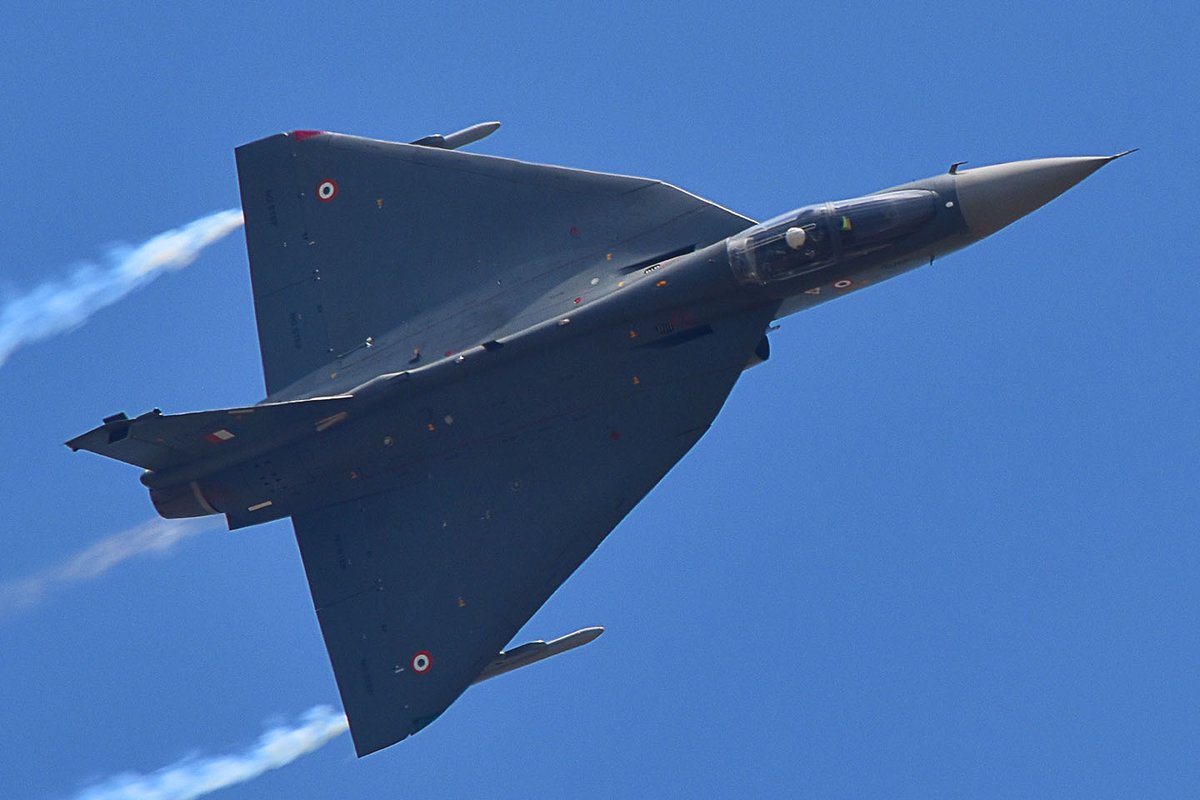Aerospace
Argentina is wrapping up the purchase of the LCH Prachand Helicopter and the Indian-built Tejas Mark 1 fighter.

Argentina is apparently looking at acquiring advanced military equipment from India in order to strengthen its defense capabilities. According to a report, Argentina is planning to buy Prachanda helicopters and Tejas Mark 1A fighter jets.
Jorge Taiana, the defense minister of Argentina, will speak with Rajnath Singh, the defense minister of India, in a bilateral meeting on July 18 to discuss ways to strengthen defense and collaboration during his visit to India. Additionally, a letter of intent to buy 20 “Prachand” helicopters is anticipated to be inked. A deal worth Rs 8675 crore could possibly be reached with India for the fourth-generation fighter aircraft Tejas Mark-1A and LCH Prachanda.
India’s first indigenous multi-role combat helicopter, the LCH Prachand, is capable of both aerial and ground attacks. The helicopter has a top speed of 288 mph, a combat radius of 500 km, and a service ceiling of 21,000 feet. Prachanda helicopters, known for their versatility and reliability, have gained international acclaim for their outstanding performance in challenging environments. These multi-role helicopters can be deployed for a wide range of missions, including troop transport, search and rescue operations, and anti-submarine warfare.
Additionally, Argentina needs 12 light combat aircraft, for which China and HAL have both offered letters of intent. This deal was expected to put Tejas against the Chinese JF-17, although HAL has made substantial progress in this area. Earlier, Argentina’s Defence Minister and Air Force Chief had expressed their desire to buy this Tejas aircraft in Aero India 2023. Tejas, a Light Combat Aircraft (LCA) made in India, is quickly becoming the first choice of several countries.
Tejas Mark 1A fighter jet is India’s indigenously developed state-of-the-art aircraft, widely acknowledged for its cutting-edge technology and exceptional combat capabilities. The lightweight, supersonic fighter jet boasts advanced avionics, smart weapons systems, and superior maneuverability, making it an ideal choice for modern air-to-air and air-to-ground engagements. By incorporating the Tejas Mark 1A into its air force, Argentina aims to strengthen its aerial defense and gain a competitive edge in the region.
Argentina’s decision to buy Tejas Mark 1A fighter planes and Prachanda helicopters comes at a crucial point as it works to solve security issues in the area and strengthen its position in the defense industry. The purchase of these cutting-edge aircraft represents a major advancement in the nation’s attempts to improve its military capabilities and keep a strong defense position.

Aerospace
Boeing Transfers Rocket Stage to NASA, Paving Way for Human Moon Mission

Boeing has achieved a significant milestone by providing NASA with the second core stage of the Space Launch System (SLS) rocket.
This crucial component, crafted at NASA’s Michoud Assembly Facility (MAF), is set to propel the Artemis II crew into lunar orbit, marking humanity’s return to deep space after a 50-year hiatus.
The monumental Boeing-built rocket stage, the largest element of the Artemis II mission, will embark on a journey aboard the Pegasus barge, traveling 900 miles to NASA’s Kennedy Space Center.
Comparison of two legendary aircraft B777x vs B747 aircraft:Click here
Upon arrival, it will be meticulously integrated with other essential Artemis II components, including the upper stage, solid rocket boosters, and NASA’s Orion spacecraft within the iconic Vehicle Assembly Building. This intricate integration process is a vital step toward the eagerly anticipated Artemis II launch, slated for 2025.
“Boeing-built products helped land humankind on the moon in 1969, and we’re proud to continue that legacy through the Artemis generation,” remarked Dave Dutcher, vice president and program manager for Boeing’s SLS program. “Together, with NASA and our industry partners and suppliers, we are building the world’s most capable rocket and paving the way to deep space through America’s rocket factory in New Orleans.”
NASA, Lockheed Martin Reveal X-59 Quiet Supersonic Aircraft:Click here
The delivery of Core Stage 2 marks a significant achievement in the evolution of the SLS rocket. Towering over 200 feet and powered by four RS-25 engines, this core stage, coupled with two solid-fueled booster rockets, will generate a staggering 8.8 million pounds of thrust. This immense power is crucial to launching Artemis II and future missions into the vast expanse of space.
The SLS rocket stands unparalleled in its capability to transport both crew and substantial cargo to the moon and beyond in a single launch. Its extraordinary capacity will facilitate the delivery of human-rated spacecraft, habitats, and scientific missions to destinations including the moon and Mars, ushering in a new era of space exploration.
-

 Travel1 week ago
Travel1 week agoAir India to Expand US Operations with Three New Routes After a Decade
-

 Travel2 weeks ago
Travel2 weeks agoWhy We Should Avoid These Stamps in a Passport
-

 Airlines1 month ago
Airlines1 month agoInvestigations Reveal Fake Chinese Titanium in Boeing and Airbus Jets
-

 Tech4 weeks ago
Tech4 weeks agoChina’s CATL Plans 1,800-Mile Electric Plane Launch by 2027
-

 Airport3 days ago
Airport3 days agoTop 10 Largest Airports in the World by Size
-

 Aerospace4 weeks ago
Aerospace4 weeks agoChina’s Fighter Jets Turn Wings into Autonomous Drones
-

 Airlines4 days ago
Airlines4 days agoAir India Rolls Out A350s for Delhi-New York JFK and Newark Routes
-

 Defence3 weeks ago
Defence3 weeks agoBoeing Enhances Chinook with New Engines and Block II Upgrades at $96 Million







